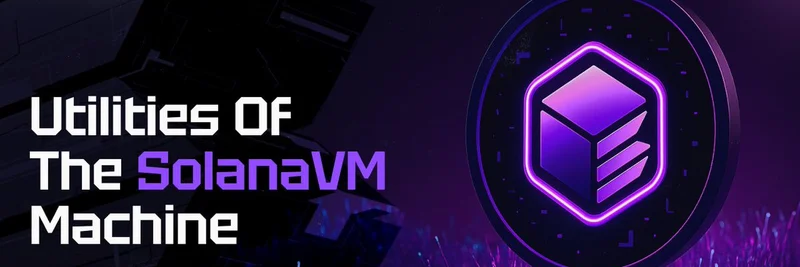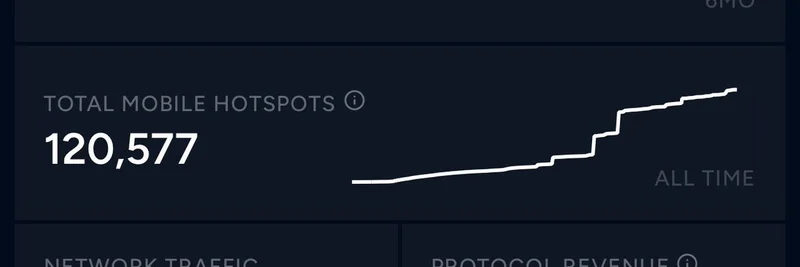Introduction to SolanaVM's Latest Announcement
Hey there, blockchain enthusiasts! If you're keeping an eye on the Solana ecosystem, you might have caught the recent buzz from SolanaVM's tweet. They're spilling the beans on the utilities of their SolanaVM machine and giving a deep dive into how their upcoming platform operates, along with the principles behind the $SVM token. As someone who's been in the crypto journalism game, I can tell you this is big news for developers and investors alike. Let's break it down in simple terms, drawing from their detailed Notion documentation.
SolanaVM is essentially a game-changer, building a fully compatible Ethereum environment right on the Solana blockchain. This means devs can bring over their Ethereum-based dApps without a ton of rework, tapping into Solana's super-fast and cheap transactions. Think of it as merging the best of both worlds: Ethereum's familiar tools with Solana's speed demon performance.
What Exactly is SolanaVM?
At its core, SolanaVM is a virtual machine tailored for the Solana blockchain, but with a twist—it's designed to be fully compatible with Ethereum. This allows developers to deploy dApps written in Solidity or Vyper directly onto Solana's layer-2 (L2) setup. No need for major code overhauls; it's all about seamless integration.
The platform acts as a bridge, mimicking the Ethereum Virtual Machine (EVM) while harnessing Solana's unique features like parallel transaction processing and Proof-of-History (PoH) for timestamping. This setup ensures that smart contracts run efficiently in a secure, sandboxed environment, making it ideal for high-performance applications.
How Does SolanaVM Work?
Let's get a bit technical, but I'll keep it straightforward. SolanaVM operates by creating an EVM-compatible layer on top of Solana's blockchain. Here's the gist:
Smart Contract Execution: Developers write contracts in familiar languages like Solidity. These are compiled into bytecode that SolanaVM interprets and executes using Solana's high-throughput architecture.
Parallel Processing: Unlike Ethereum's sequential model, SolanaVM leverages Solana's ability to handle multiple transactions at once, slashing wait times and boosting scalability.
Consensus and Security: It combines Solana's PoH with robust consensus mechanisms to timestamp and validate transactions securely, preventing common issues like double-spending.
Integration Tools: Support for Ethereum's RPC API, account systems, and token standards (like ERC-20 and ERC-721) means your existing Ethereum workflows slide right in.
The result? Transactions costing just pennies (around $0.01 each) and speeds up to 5,000 per second. Perfect for dApps that need to handle a lot of action without breaking the bank.
Key Utilities of the SolanaVM Machine
SolanaVM isn't just about speed—it's packed with utilities that make it a powerhouse for blockchain practitioners:
Developer-Friendly Environment: Use Ethereum tools you're already comfortable with, like MetaMask integration (coming soon), to build and deploy on Solana.
Cost and Performance Boost: Say goodbye to high gas fees. SolanaVM's low-cost model and high TPS make it great for DeFi protocols, NFT marketplaces, and gaming dApps.
Cross-Chain Interoperability: Easily connect with other blockchains, expanding your dApp's reach without extra hassle.
Scalability Features: Things like sharding distribute workloads, ensuring the platform can grow with demand.
Ecosystem Perks: Plug into Solana's vibrant community and tools, all while maintaining Ethereum compatibility.
These features make SolanaVM a go-to for anyone looking to build scalable, efficient dApps. Whether you're into DeFi lending, NFT trading, or blockchain games, this platform has your back.
The Mechanics Behind the $SVM Token
Now, onto the $SVM token—the fuel of the SolanaVM ecosystem. This isn't just another crypto; it's a utility and governance token designed to keep things running smoothly.
Tokenomics Basics: $SVM has a fixed supply, with portions allocated for development, community rewards, and liquidity. This scarcity model helps maintain value over time.
Utility Functions: Use $SVM to pay transaction fees on the platform. Staking it lets you earn rewards and vote on governance decisions, like protocol updates.
Incentives and Rewards: Liquidity providers on integrated DEXes earn fees, and there's a deflationary burn mechanism where a slice of transaction fees gets burned, reducing supply.
Premium Access: Holding $SVM unlocks perks like priority transaction processing and exclusive dev tools, encouraging active participation.
In essence, $SVM ties the community together, incentivizing staking, governance, and ecosystem growth. It's the backbone that ensures SolanaVM remains decentralized and user-driven.
Why This Matters for Meme Tokens and Beyond
At Meme Insider, we're all about meme tokens, but SolanaVM's tech could supercharge meme projects on Solana. Imagine launching a meme coin dApp with Ethereum ease but Solana speed—low fees mean more fun for traders, and high throughput handles viral pumps without crashes. Plus, $SVM's mechanics add a layer of utility that could inspire similar models in meme ecosystems.
If you're a dev or investor, keep an eye on SolanaVM's upcoming features like RPC connections and dApp deployments. This could be the next big leap in multi-chain DeFi.
Stay tuned for more updates, and if you've got thoughts on SolanaVM, drop them in the comments!



